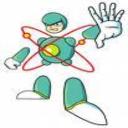Yahoo Answers is shutting down on May 4th, 2021 (Eastern Time) and beginning April 20th, 2021 (Eastern Time) the Yahoo Answers website will be in read-only mode. There will be no changes to other Yahoo properties or services, or your Yahoo account. You can find more information about the Yahoo Answers shutdown and how to download your data on this help page.
Trending News
Physics collisions question?
Suppose a child drives a bumper car head on into the side rail, which exerts a force of 2400 N on the car for 0.500 s. (Assume the initial velocity is in the positive direction.)
(a)
What impulse (in kg · m/s) is imparted by this force? (Indicate the direction with the sign of your answer.)
Incorrect: Your answer is incorrect.
kg · m/s
(b)
Find the final velocity (in m/s) of the bumper car if its initial velocity was 2.90 m/s and the car plus driver have a mass of 200 kg. You may neglect friction between the car and floor. (Indicate the direction with the sign of your answer.)
m/s
1 Answer
- electron1Lv 72 years agoFavorite Answer
As the bumper car hits the side rail, its velocity will decrease. This means the force is negative.
There are two equations for impulse.
Eq#1, Impulse = Force * time
Eq#2, Impulse = Mass * Change of velocity
This is the change of momentum.
Impulse = -2400 * 0.5 = -1200 kg * m/s
(b)
Find the final velocity (in m/s) of the bumper car if its initial velocity was 2.90 m/s and the car plus driver have a mass of 200 kg. You may neglect friction between the car and floor. (Indicate the direction with the sign of your answer.)
m/s
The first step is to determine the acceleration.
-2400 = 200 * a
a = -12 m/s^2
Let’s use the following equation to determine the final velocity.
vf = vi + a * t
vf = 2.90 + -12 * 0.5 = -3.1 m/s
The negative sign means the bumper car is moving away from the side rail after the collision. I hope this is helpful for you.


